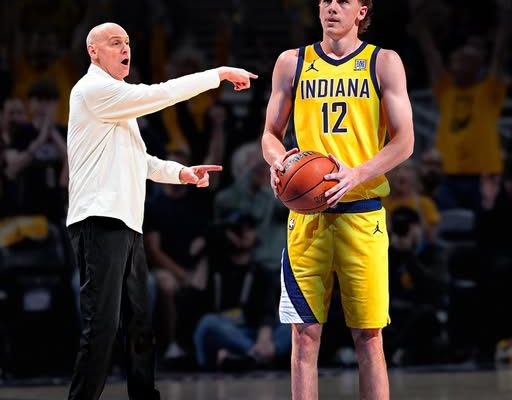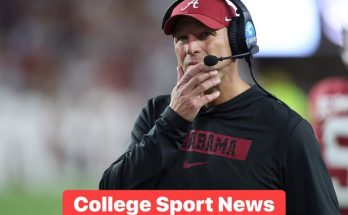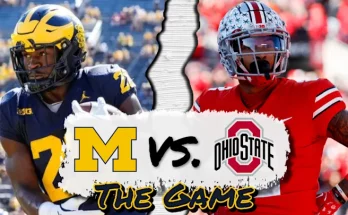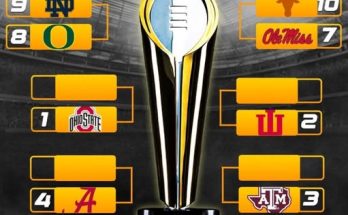The Indiana Pacers entered last season with modest expectations, yet they finished as one of the most surprising and inspiring stories in the NBA. A franchise that had long floated in the waters of mediocrity, defined by playoff absences or first-round exits, suddenly found themselves on the biggest stage, battling their way into the NBA Finals. They weren’t supposed to be there, at least not yet, but their combination of pace, spacing, defensive commitment, and team-oriented culture propelled them past more experienced and star-studded rosters. Led by Tyrese Haliburton, a young point guard who quickly became the face of the franchise, the Pacers didn’t just ride a Cinderella wave; they proved they belonged with the league’s elite. Yet, as quickly as fortunes rise, they can also shift, and this season the Pacers are confronting a harsh new reality: what happens when the centerpiece of your identity, your leader, your orchestrator, is suddenly gone? That is the question facing Indiana as they attempt to replace Tyrese Haliburton while simultaneously preserving the depth and cohesion that made their Finals run possible.
Haliburton was more than a leading scorer or a highlight machine. He was the engine that powered everything the Pacers did on the offensive end. His court vision, creativity, and ability to manipulate defenses gave Indiana a free-flowing offensive style that few teams could contain. He had a unique blend of efficiency and flair, using his passing ability to maximize the spacing of shooters like Buddy Hield and Bennedict Mathurin while also knowing when to assert himself as a scorer. More importantly, he gave the Pacers a sense of identity, one rooted in unselfish play and relentless energy. Losing him, whether through injury or roster movement, is not just about missing out on points and assists—it is about losing the philosophical anchor of the team.
For the Pacers’ front office and coaching staff, the challenge now is multi-layered. On one hand, they must find a way to replace Haliburton’s production, which is no small task given how central he was to the offense. On the other hand, they must ensure that their attempt to do so does not compromise the depth and chemistry that made them so dangerous in the first place. Too often, teams that lose their star fall into the trap of overcompensating, either by making a panic trade that guts their roster or by overloading another player with responsibilities they cannot sustain. The Pacers cannot afford either approach if they hope to maintain their status as a contender.
Replacing Haliburton’s production will likely require a committee approach rather than one savior. The Pacers do not have another player on their roster capable of replicating his unique playmaking ability. Andrew Nembhard has shown flashes of being a steady and versatile guard, someone who can step into a bigger role with confidence. T.J. McConnell, one of the league’s most underrated backup point guards, brings hustle, leadership, and a knack for making plays in the mid-range or on the defensive end. Neither, however, can replicate Haliburton’s ability to collapse a defense and create open looks for everyone else. What Indiana must do instead is build on the collective strengths of their guards and wings, emphasizing ball movement and shared responsibility. This may mean leaning more heavily on Bennedict Mathurin’s ability to create off the dribble, giving him the chance to evolve from a secondary option into a primary scorer. It could also mean encouraging Aaron Nesmith and Myles Turner to take on more responsibility as offensive hubs in certain sets. The challenge will be ensuring that this redistribution of roles does not disrupt the balance that made Indiana successful.
At the same time, the Pacers cannot lose sight of the importance of their depth. Part of what separated Indiana during their Finals run was their ability to deploy waves of productive players who knew their roles and executed them effectively. They could stretch defenses with shooters at every position, push the pace relentlessly, and keep their energy high because they trusted their bench as much as their starters. Preserving that depth is crucial, particularly if they hope to weather the absence of their star. Making a blockbuster trade that sacrifices multiple role players for a single replacement might feel tempting, but it risks dismantling the very foundation of the team’s identity. Instead, the Pacers must be strategic, perhaps looking for smaller moves that add stability without jeopardizing chemistry.
The coaching staff will also play a significant role in navigating this transition. Rick Carlisle, a veteran coach with a reputation for maximizing his rosters, must find ways to adjust the Pacers’ style of play to fit their new reality. Without Haliburton’s orchestration, Indiana may not be able to rely as heavily on early-offense opportunities created by his quick reads. Instead, they may need to explore more structured half-court sets that take advantage of Turner’s pick-and-pop ability, Mathurin’s slashing, and Nesmith’s floor spacing. Defensively, the Pacers must be even more disciplined. Haliburton’s offensive brilliance often masked the team’s defensive inconsistencies, but now they may need to grind out victories with effort, rotations, and rebounding.
Another dimension to consider is the psychological impact of losing Haliburton. For a team that tasted the Finals far earlier than expected, the sudden absence of their leader could lead to doubt and frustration. Players who thrived in complementary roles may struggle when thrust into the spotlight. Maintaining confidence and morale will be just as important as tactical adjustments. Carlisle and the locker room leaders must reinforce the message that while Haliburton’s absence is significant, it does not define their season. The Pacers can still compete, but they must do so by trusting in one another and embracing the challenge of collective growth.
There is also the broader organizational perspective to consider. The Pacers’ surprising Finals run accelerated their timeline, raising expectations both inside and outside the franchise. Before last season, Indiana was seen as a promising team on the rise; now, they are viewed as a legitimate contender. That shift changes the stakes. A setback without Haliburton could easily be seen as regression, yet the front office must balance short-term competitiveness with long-term sustainability. If Haliburton’s absence is temporary due to injury, the goal should be survival—staying afloat in the playoff picture until he returns. If, however, his absence signals a more permanent change, then Indiana faces tough questions about roster construction and the pursuit of another star.
What makes this situation particularly intriguing is that the Pacers have built one of the league’s most balanced rosters. They are not overly reliant on aging veterans, nor are they a team loaded with unproven prospects. Instead, they have a healthy mix of youth and experience, shooters and defenders, role players and potential breakout stars. This gives them flexibility, but it also raises the stakes for every decision. The wrong move could tip the balance and unravel the cohesion that carried them to the Finals. The right move could solidify them as perennial contenders, even in the absence of their star.
From a fan perspective, the narrative surrounding the Pacers will inevitably shift. During their Finals run, they were embraced as underdogs, a refreshing reminder of basketball as a team game. Without Haliburton, they may no longer be viewed as darlings but instead as a test case: can a team maintain success when its star is taken away? That narrative can serve as motivation. The Pacers have an opportunity to prove that their identity goes deeper than one player, that their culture and commitment to unselfish basketball can sustain them.
Looking ahead, the Pacers’ immediate future will hinge on adaptability. If Mathurin can take a leap forward as a go-to scorer, if Nembhard can mature into a steady lead guard, if Turner can anchor both ends of the floor consistently, then Indiana may surprise once again, even without Haliburton. If not, they risk sliding back into the middle of the pack, where expectations are high but results are modest. Either way, this season will serve as a defining chapter in the Pacers’ evolution.
What cannot be overlooked is that Indiana has already defied expectations. Few teams rebound from mediocrity to make a Finals run so quickly. That experience, while fleeting, provided invaluable lessons. The Pacers now know what it takes to reach the pinnacle, and that knowledge will not disappear. Haliburton may be absent, but the culture he helped build remains. If Indiana can preserve that while navigating the present challenges, they will not just survive this period—they will emerge stronger for it.
Ultimately, the Pacers’ story is shifting from one of unexpected triumph to one of resilience and adaptation. Replacing Tyrese Haliburton is an unenviable task, and there is no perfect solution. But in the process of confronting this challenge, the Pacers have a chance to reinforce who they are: a team built on depth, chemistry, and a belief that basketball is bigger than any one player. Their journey may no longer be defined by surprise, but by the determination to prove that their Finals run was not a fluke—it was the beginning of a new era in Indiana basketball.



